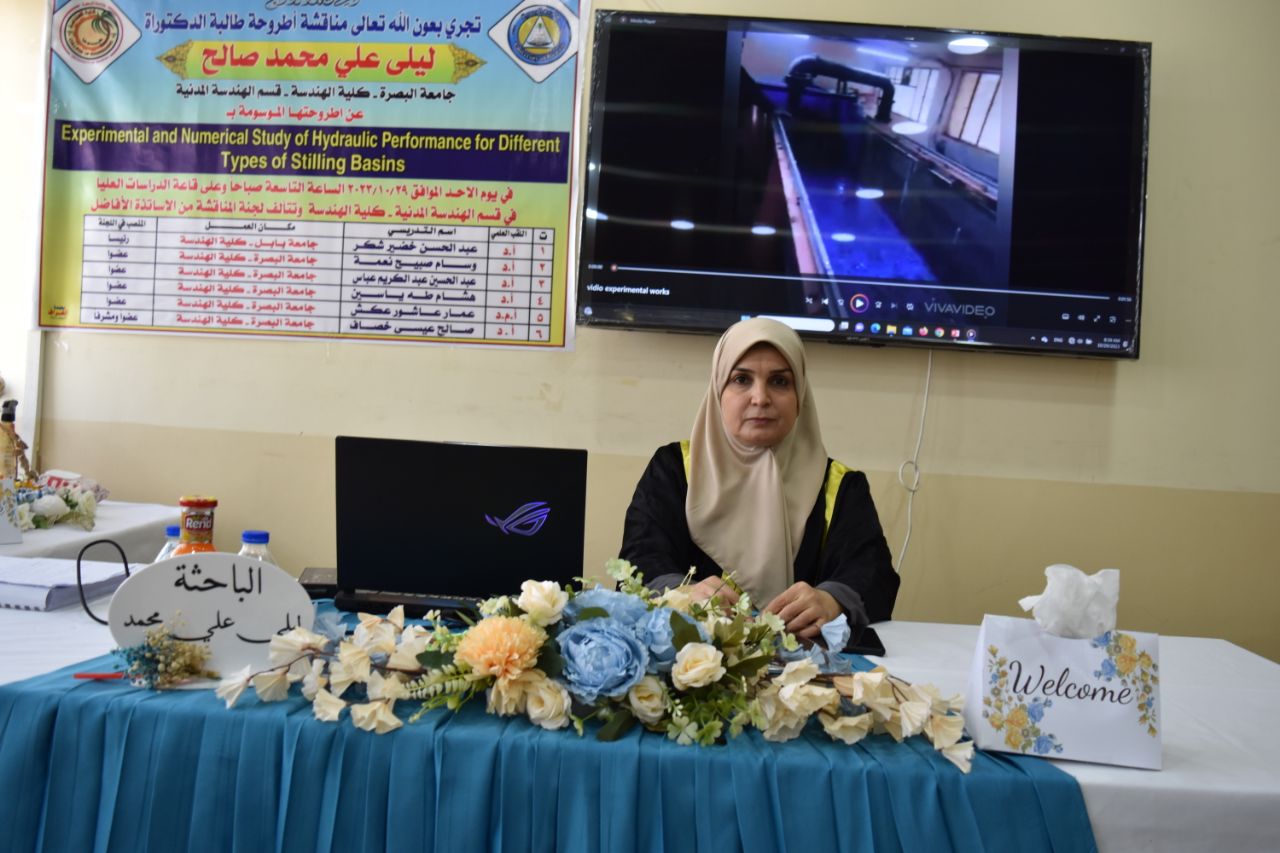A doctoral thesis by the student Laila Ali Muhammad Saleh was discussed in the Department of Civil Engineering at the College of Engineering, University of Basra, where laboratory and numerical tests were conducted to evaluate the performance of different types of calming basins at the back of the waterway. These basins were created by making changes to the standard tempering basin (USBRII). The changes included the use of six types of Chute blocks, seven types of end sill, three counter-slope floors instead of a horizontal floor, and five types of rough floors.
Laboratory results show that an effective stilling basin can be obtained by combining blocks with stepped sides, a horizontal smooth floor, and a vertical end sill with staggered rectangular openings. The length of this composite basin was 18% less than the length of a standard USBRII basin, the secondary depth ratio was 9% less, while the energy dissipation was 4% more.
The standard tempering basin (USBRII) was simulated numerically using different rough surfaces instead of the smooth ground. The results indicated a distribution of cubic-shaped blocks at the bottom of the basin with an intensity of 10% and a relative roughness height equal to (1), which led to an increase in the efficiency of the basin compared to the smooth floor and other rough floors. Therefore, a new stilling basin was developed by using the optimized rough floor in the composite stilling basin instead of the smooth floor.







